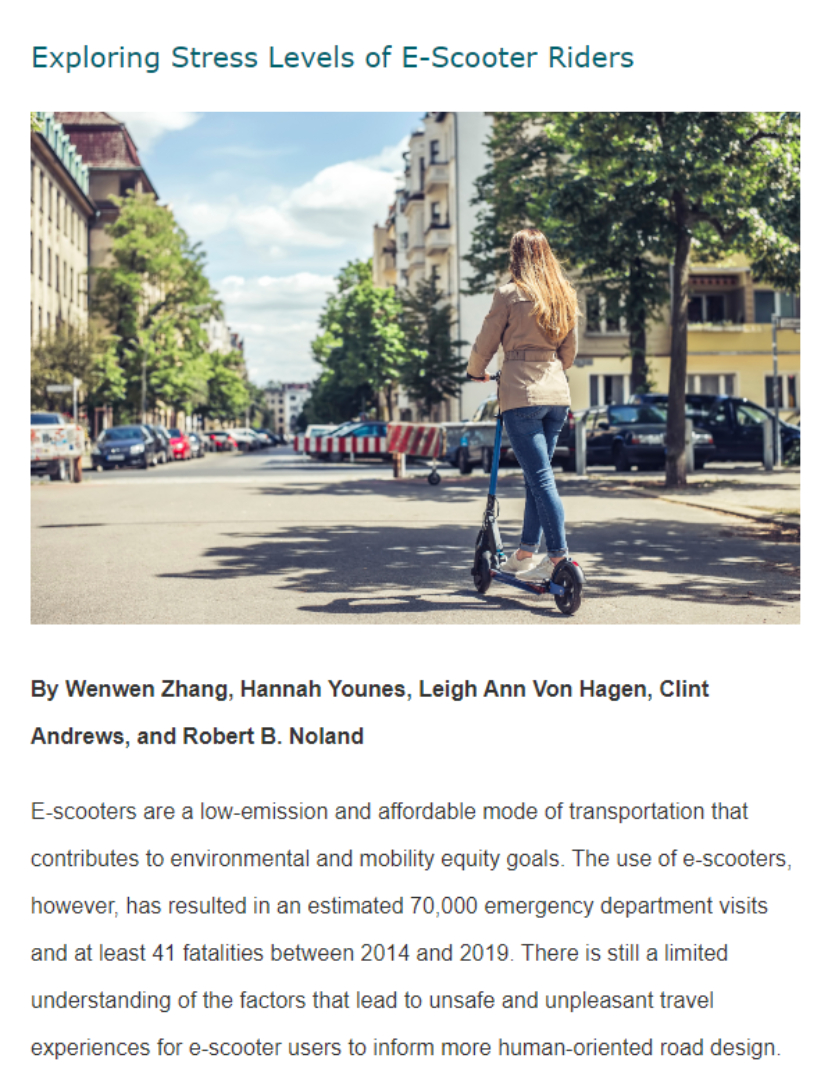Abstract
E-scooters are a low-emission and affordable mode of transportation that contributes to environmental and mobility equity goals. The use of e-scooters, however, has resulted in an estimated 70,000 emergency department visits and at least 41 fatalities between 2014 and 2019. There is still a limited understanding of the factors that lead to unsafe and unpleasant travel experiences for e-scooter users to inform more human-oriented road design. We piloted a real-world e-scooter user experiment by equipping a volunteer with biometric sensors including eye tracking glasses and stress sensors. Our objective was to explore the feasibility of examining the impact of the perceived travel environment on the stress level of an e-scooter user. The results of this pilot data collection effort provide insights on the potential use of the latest sensor technology and computer vision algorithms to understand travel behavior for new and emerging transportation modes.
We conducted a temporary demonstration project in Asbury Park, NJ in April 2022, funded by the National Science Foundation. This involved making simple and cheap changes to a road, in this case by setting up a temporary (pop-up) bicycle lane. Working with local authorities, students in a Bloustein studio course placed a chalk-drawn line and cones through a high-traffic intersection to analyze how this affected e-scooter safety (see Figure 1). The intersection was particularly hazardous due to its wide turning angle for drivers coming from downtown Asbury Park and traveling towards the beach. Motor vehicles often did not slow down sufficiently when turning right.
